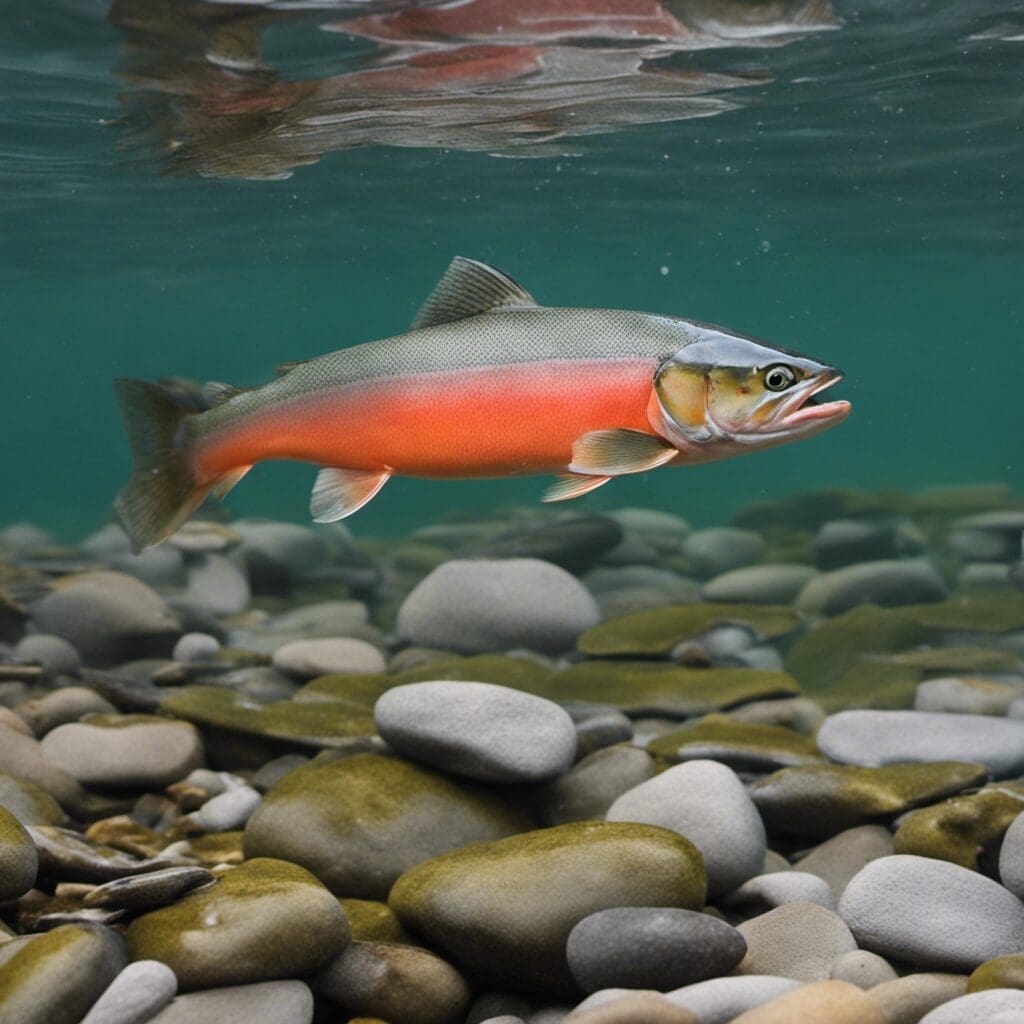Introduction
The Arctic Char (Salvelinus alpinus) is a member of the Salmonidae family. It is closely related to both salmon and lake trout, and has many characteristics of both.
Conservation Status
The Arctic Char is currently listed as “Least Concern” on the IUCN Red List. Conservation efforts currently include preserving and protecting its natural habitats.
Statistics
| Feature | Average | Range |
|---|---|---|
| Length | 70 cm | 58-82 cm |
| Weight | 7 kg | 3-10 kg |
| Lifespan | 20 years | |
Distribution
Arctic Char inhabit both Arctic and Subarctic waters across the globe including Northern Russia, Canada, Norway, Sweden and Greenland. It tends to migrate up and down water streams depending on the season.
Habitats
They can be found in a variety of water types including fresh, brackish or saltwater, preferring depth range is from the surface down to about 200m. They thrive in temperatures between -1 to 20 °C.
When and Where to See
The Arctic Char migration typically happens during late summer and autumn, making this the best time to witness them. They are most active during the day.
Best Fishing Locations
Here are some of the top fishing locations for Arctic Char:
- Lake Hazen, Canada
- Baker Lake, Canada
- Gullmarsfjorden, Sweden
- Alexandra Fiord, Canada
- Roskilde Fjord, Denmark
- Lake Torneträsk, Sweden
- Windermere, England
- Loch Rannoch, Scotland
- Lake Geneva, Switzerland/France
- Alaska, USA
General Tips: Look out for upstream currents and eddies in rivers and in large clear lakes, the rim area can be a hotspot for arctic char.
How to Catch
- Preferred bait: Small flies and soft plastic bait.
- Fishing techniques: Fly fishing, trolling and ice fishing.
- Best time for fishing: During spring and autumn.
Identification Guide
Physical characteristics: Arctic Char are most easily recognized by its light, cream or pinkish spots over a dark blue or brownish body. They also have a slender body shape with a small head and a large mouth.
Comparison with similar species: They are often confused with Brook Trout but can be distinguished by their lighter spots and long, tapering body.
Culinary
- How to Cook: Arctic Char is best cooked grilled, pan-fried or baked.
- Taste Profile: It has a rich, slightly sweet flavor with a firm texture.
- Nutritional Information: A 100g portion contains approximately 140 Calories, 20g Protein and 6g Fat.
Additional Information
Arctic Char are solitary creatures that predominantly feed on insects, crustaceans, and fish. They exhibit a unique mating ritual in which they change their body color to a vibrant red during spawning. Predators of the Arctic Char include seals, humans, and larger fish. The Arctic Char has been a vital food source for the Inuit and other Arctic people for centuries.
References and Further Reading
For more information, you may refer to materials from the Fish Base, IUCN Red List, and Fisheries and Oceans Canada.

